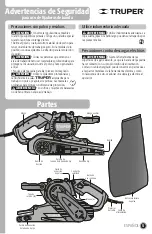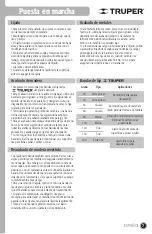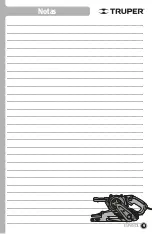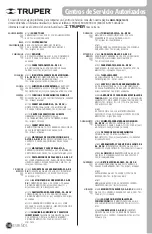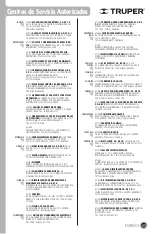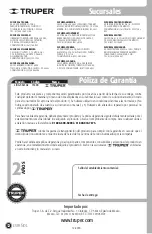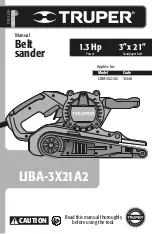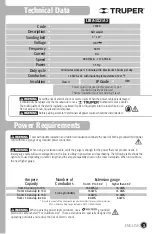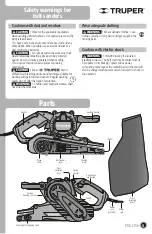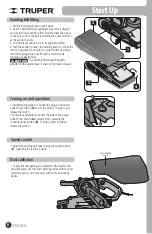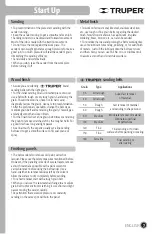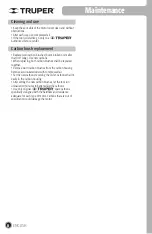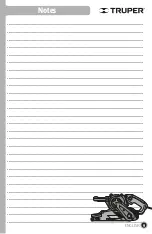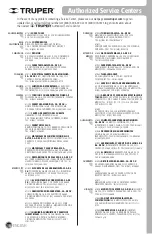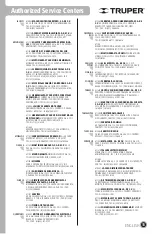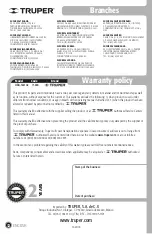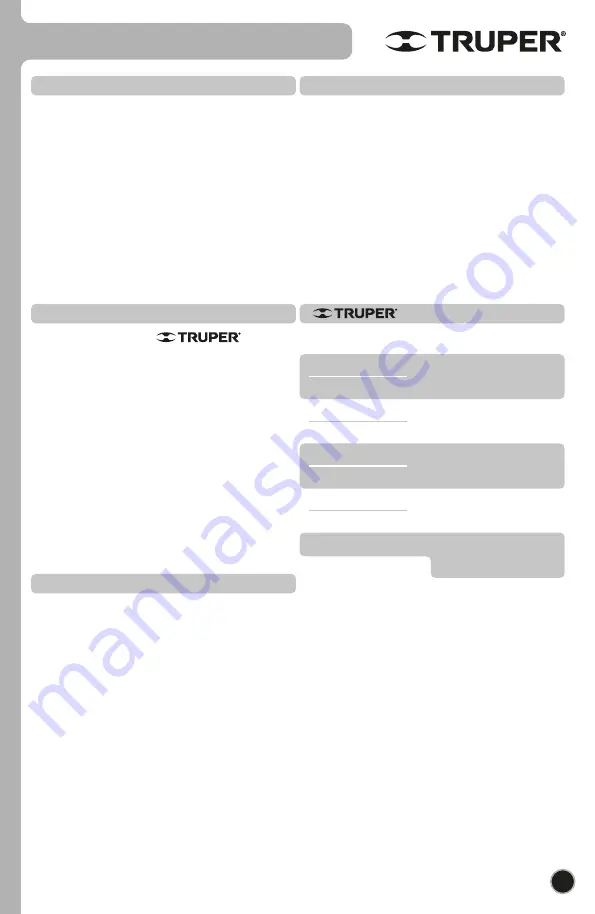
7
Start Up
• To work on ferrous metal, like steel, stainless steel, iron,
etc., use rough or fine grain belts, regarding the desired
finish. Non-ferrous metal such as aluminum, tin-plate
soldering, brass, bronze, etc., can also be sanded.
• To minimize the load and prolong the belts’ working time
use some lubricant for sanding, polishing, or for satin finish
of metals. Just rub the lubricant onto the belt every now
and then. Also, you can use SAE No. 10 or 20 lubricant oil
to assure a smooth and scratch-less surface.
Metal finish
sanding belts
• To prevent striation of the piece start sanding with the
sander running.
• Keep the sander moving to get a smooth and even job.
• Sanding consists in a backward and forward movement.
Most of the job is made with the traction movement.
• Do not force the tool against the work piece. The
sander’s own weight generates enough pressure to make a
good job. Too much pressure will tear the sander’s grain,
diminishing the sanding efficiency.
• Sand slowly and systematically.
• When you stop, raise the sander from the work piece
before turning it off.
Sanding
• Assure you are selecting brand
sanding belts with the right grain.
• For the initial sanding on an unfinished piece of wood
use a belt with rough or very rough grain. Sand along the
grain. Should the wood is uneven or to hard, sand
diagonally (across the grain). Use care to prevent striation.
• After the preliminary operation, change the belt. Use a
medium grain belt and sand along the grain. This will give
a relatively smooth and even finish.
• For the final finish set a fine grain belt. Always sand along
the grain to remove scratches left by the rougher belts. For
a good finish use long and light passes.
• As a final touch, the experts usually set a fine sanding
belt used to get a smooth surface, to fill, seal, plane or
spray.
Wood finish
• The belt sander also removes old paint, varnish or
lacquer. Please use the safety measures mentioned before.
However, if the paneling is made of several layers, remove
as much material as possible with a paint solvent or
varnish remover before using the belt sander. Use a
hand-scratcher to remove residues left by the solvent.
Allow the surface to dry completely before sanding.
• For a fast removal, start with a rough grain belt.
• When you can see the raw material change to a medium
grain belt to prevent from scratching it. Use short and light
passes moving the sander quickly.
• Pay attention that excessive pressure or constantly
sanding on the same spot will burn the panel.
Finishing panels
ENGLISH
Grain
Type
Applications
36
40
50
60
80
100
120
150
180
Extra rough
Extra rough
Rough
Rough
Medium
Medium
Fine
Fine
Extra fine
Super-fast removal
of material.
Fast removal of material
and sanding to shape wood.
Final sanding or to clean
surfaces before painting or sealing.
Final sanding or
after sealing.
Moderate removal of material.
Eliminate superficial
imperfections.
Содержание 13448
Страница 9: ...9 Notas ESPA OL...
Страница 21: ...9 Notes ENGLISH...

